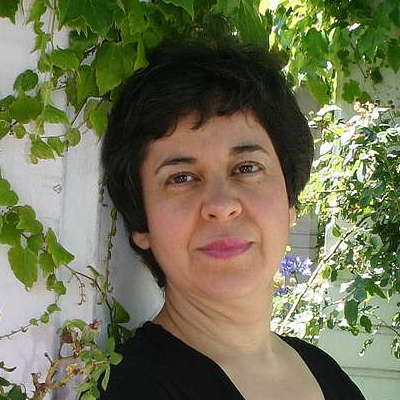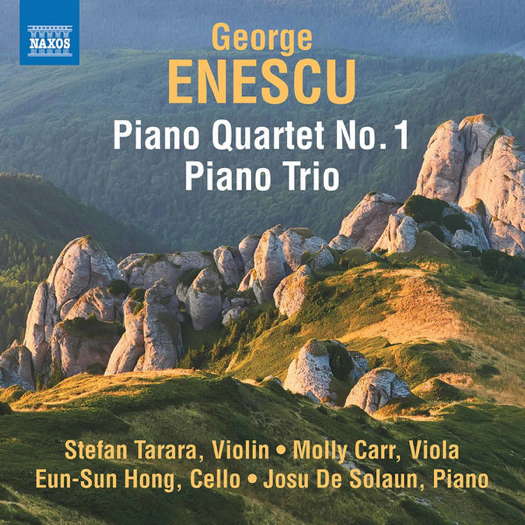- Bononcini
- R Murray Schafer
- Violanta
- notes inégales
- Berlin
- Celebrating English Song at Tardebigge
- Luigi Dallapiccola: Due Liriche di Anacreonte
- Edward Nesbit: Nativity
 DISCUSSION: What is a work? John Dante Prevedini leads a discussion about The performing artist as co-creator, including contributions from Halida Dinova, Yekaterina Lebedeva, Béla Hartmann, David Arditti and Stephen Francis Vasta.
DISCUSSION: What is a work? John Dante Prevedini leads a discussion about The performing artist as co-creator, including contributions from Halida Dinova, Yekaterina Lebedeva, Béla Hartmann, David Arditti and Stephen Francis Vasta.
 SPONSORED: A Seasoned Champion of New Music. Argentinian-American pianist Mirian Conti in conversation with Andrew Schartmann.
SPONSORED: A Seasoned Champion of New Music. Argentinian-American pianist Mirian Conti in conversation with Andrew Schartmann.
All sponsored features >>

Unjustly Neglected
GEOFF PEARCE listens to Enescu chamber music
'... a very fine recording ...'
I have long been fascinated and inspired by George Enescu (1881-1955), from the time I first heard his recording with Yehudi Menuhin of the Bach Double Concerto on an old set of 78s. I then heard the two Romanian Rhapsodies and the violin sonatas, and realised that here was a very individual and powerful musical voice. Whilst he did not write a lot of music, there were also five symphonies amongst his output and I feel he is unjustly neglected. In his music, one can hear French and German influences of the late nineteenth and early twentieth centuries as well as folk music influences from his homeland, Romania.
The three movement Piano Trio in A minor, composed in 1916, was not rediscovered until 1965. The opening movement is hard to describe, but is both expressive and at the same time often introspective.
Listen — Enescu: Allegro moderato (Piano Trio in A minor)
(8.573616 track 1, 6:31-7:18) ℗ 2022 Naxox Rights US Inc :
The second movement is a set of three variations and a coda, over about a five minute duration. I can certainly hear strong French influences here, at times a little reminiscent of Debussy and Ravel, and this is especially evident in the last variation and coda.
Listen — Enescu: Allegretto con variazioni (Piano Trio in A minor)
(8.573616 track 2, 4:19-4:55) ℗ 2022 Naxox Rights US Inc :
The last movement is built around two themes, the first rather heavy, dark and slow, and the second more dance-like and lighter in mood. This is a charming movement, and once again one can hear a stronger influence of early twentieth century French music.
Listen — Enescu: Andante - Vivace amabile (Piano Trio in A minor)
(8.573616 track 3, 3:44-4:23) ℗ 2022 Naxox Rights US Inc :
The first Piano Quartet in D major was completed in 1909 and is quite different from the trio. The first movement, at over thirteen minutes in duration, is quite substantial. This is expressive and varied music, at times lyrical, and at others more dramatic. Enescu writes with feeling as well as considerable technical prowess. There is a brooding intensity here, but also great joy.
Listen — Enescu: Allegro moderato (Piano Quartet No 1 in D)
(8.573616 track 4, 6:29-7:10) ℗ 2022 Naxox Rights US Inc :
The second movement, slow and sad at first, has a much more delicate texture. Enescu had studied with both Massenet and Fauré, and I feel the latter's influence throughout this movement, with its somewhat limpid sensuality and modal writing.
Listen — Enescu: Andante mesto (Piano Quartet No 1 in D)
(8.573616 track 5, 5:44-6:24) ℗ 2022 Naxox Rights US Inc :
The last movement, lively and strongly rhythmic in nature, is powerful and optimistic. The opening gives way to a more expansive and lyrical mid-section until the opening theme is restated and developed. The second theme then returns before the final coda.
Listen — Enescu: Vivace (Piano Quartet No 1 in D)
(8.573616 track 6, 4:38-5:20) ℗ 2022 Naxox Rights US Inc :
Surprisingly, this work was only performed three times during the composer's lifetime, each time with the composer at the piano. He must have been a fine pianist as well as violinist, as the piano writing requires considerable accomplishment.
This is a very fine recording of four artists of exceptional abilities - Stefan Tarara, violin, Molly Carr, viola, Eun-Sung Hong, cello and Josu De Solaun, piano - not only when they are playing solo passages but also when all playing together. There's precision, balance and musical direction here, as well as virtuosity. This is fantastic music with wonderful performances and a fine sound engineer - a recording you do not want to miss.
Copyright © 23 March 2022
Geoff Pearce,
Sydney, Australia

CD INFORMATION - ENESCU: PIANO QUARTET NO 1; PIANO TRIO
CLASSICAL MUSIC ARTICLES ABOUT ROMANIA


